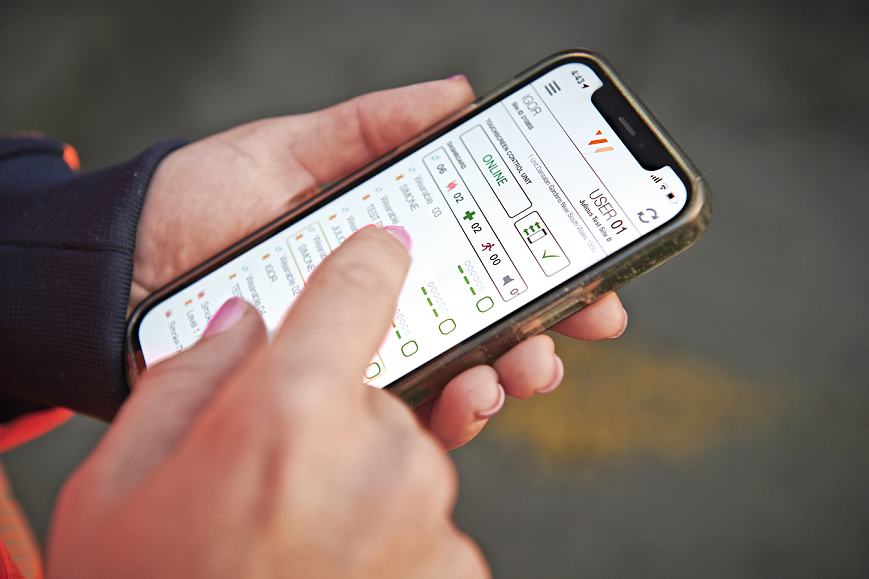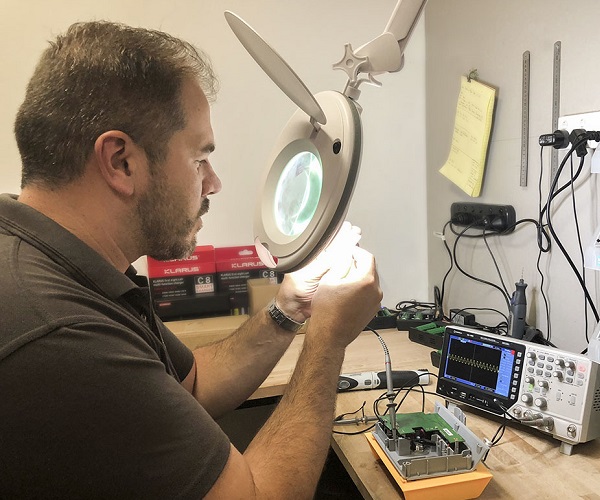Your Emergency System Should Be Evolving
Traditional evacuation systems require a fair amount of specialist installation, management and maintenance because they tend to be hard wired and permanently positioned. They also use a ‘press and guess’ approach in that there’s little visibility on the system’s power or connectivity.
That leads to a high level of assumption that when a worker triggers an alert, the system will work. But in an emergency event that’s not good enough. Technology is constantly evolving to utilise 21st-century innovations and the powerful computer we’re all carrying around in our pockets. Emergency systems should be evolving as well.
How an evacuation event is managed by a business – including how an alert is raised and responded to – can have a massive impact on safety outcomes. In an emergency it’s human nature to panic with a ‘fight or flight’ response. When people think they are in danger they can make unwise decisions, especially if a large group of people is trying to do the same thing, such as evacuate a 20-storey building. Therefore, it’s imperative to stay abreast of your options regarding worker mobilisation and communication so you can update your emergency processes and systems accordingly.
Communication
How do workers or visitors to your business currently raise an emergency alert? How do key personnel learn of the alert? How is a response managed? How are those on site informed about the emergency, including what action is required?
Having evacuation sirens in place is certainly better than nothing at all, but there are systems available now that remove the doubt and speculation that a simple siren cannot. One option is smartphone integration, which ensures workers not only hear the siren but also receive an SMS and app notification that explains where the emergency is, what kind of emergency it is, and what action is required. Messages can also be targeted with the use of site geofencing, so only those on site (with location services enabled) receive alerts.
Event-specific alarms & settings
Digitization has also made it possible to introduce multiple alarm types for different events. This is especially attractive to businesses that would need a range of alerts. A good example of this is a school: if there’s an intruder on school grounds, staff need to act quickly to protect their students by locking classrooms, not sending them out to the intruder. They’d need alerts that either instigate an evacuation OR a lockdown – two vastly different emergencies which require vastly different responses. On the other hand, a construction customer may wish to use different patterns for different site evacuation reasons such as a gas leak versus a structural issue.
Another feature innovative alert systems now offer is customisation. Each worksite is different so it’s logical that its requirements would be different. If you have an ability to customise your system then you can ensure it aligns with your emergency management plans, worker capabilities and site configuration. For example, we’ve designed our evacuation settings so customers can choose how long the siren sounds for, how long they’re off for, and how long the evacuation alert lasts. One of our customers needs their alert to last 15 minutes to fully clear the site, while another only wants it to last for six.
Software integration
As innovative suppliers take advantage of digitization, so can you as a customer. A digitized solution is likely to have APIs built into its development, which means they can integrate with third-party hardware or software to provide a seamless user experience. This could be to improve processes, business visibility or system management.
If you or your team use software to manage projects, or perform safety audits or improve operations, then it would make sense to integrate any new technologies with what you’re currently using. Successful businesses are constantly chasing efficiencies in terms of time or cost; a system that integrates with what your workers are already using will make onboarding faster and ongoing system management more effective.
Dual-purpose devices
If your site configuration is small, or your budget is limited, then you should be seeking dual-purpose devices that perform several functions within the same footprint as a single-purpose device. An example of this would be a combined evacuation trigger and siren, where the siren is smaller than a standard evacuation siren but perfectly ample for a small site. Another example would be combined medical event triggers and evacuation sirens, which enable you to offer functionality for triggering a medical alert every two–three floors, the same positions where you’d be installing sirens. Dual-purpose devices can reduce operating costs by consolidating system management and maintenance.
Authority protocols
A feature we’ve recently released is a two-step evacuation process where key personnel are requested to authorise an evacuation event before sirens are activated. This was in response to several false alarms a customer was experiencing with workers pressing the evacuation trigger to break early for the day. It’s also been used by another customer who needed to install triggers in high-traffic public spaces. False alarms can cost your business thousands in lost productivity, particularly if it’s difficult to identify who is responsible. Introducing authority protocols isn’t for every business, but it’s worthwhile considering if you’re concerned your business would experience the same.
Retrofitting
As buildings in metropolitan cities age, and prime real estate becomes less available, refurbishment projects are becoming increasingly common. You may wish to update your emergency systems to take advantage of new tech but if hard wiring is involved, it can render the project cost prohibitive.
You’re now able to purchase wireless systems that require little specialist installation (unless the supplier relies on installation/maintenance as an added revenue stream). These systems tend to use radio frequencies or cellular transmissions to form a system mesh. RF systems are the most common, but their range is limited to about 500m and obstructions such as concrete walls or floors can decrease the range even further. Cellular connected devices are fairly new on the market and only work when there’s a strong cellular signal, but their range is unlimited, making them perfect for refurbishment projects where a single system must work across multiple building floors, or construction projects where the site office is a significant distance from the worksite.
Battery life has also improved drastically over the years. We’re just about to launch devices that maintain continuous power for 18+ months! If you do install a system that uses batteries, look for rechargeable options that minimise ongoing investment; replacing batteries on 20+ devices every six months is going to be expensive. Also make sure you use a system that proactively tells you what the power status is of each device, so you’re not wasting time manually testing or making dangerous assumptions.
Transform your business
The safety industry compared to other industries has dragged the chain when it comes to innovation and technology. It’s time to transform how businesses approach onsite safety by introducing features like triggering evacuations from phone apps, monitoring worker locations during an evacuation event, and implementing multi-pronged communication strategies to ensure everyone is informed.
From a thought leadership perspective, if you use products and systems that are innovative then you create a culture of innovation. This not only assists to capture greater market share for your brand or business but also helps to attract and retain staff who are inquisitive, creative, passionate and loyal.
NOTE: this article first appeared in Asia Pacific Fire magazine.


